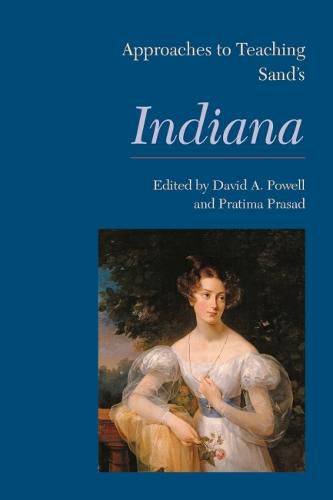Readings Newsletter
Become a Readings Member to make your shopping experience even easier.
Sign in or sign up for free!
You’re not far away from qualifying for FREE standard shipping within Australia
You’ve qualified for FREE standard shipping within Australia
The cart is loading…






Indiana, George Sand’s first solo novel, opens with the eponymous heroine brooding and bored in her husband’s French countryside estate, far from her native Ile Bourbon (now Reunion). Written in 1832, the novel appeared during a period of French history marked by revolution and regime change, civil unrest and labor concerns, and slave revolts and the abolitionist movement, when women faced rigid social constraints and had limited rights within the institution of marriage. With this politically charged history serving as a backdrop for the novel, Sand brings together Romanticism, realism, and the idealism that would characterize her work, presenting what was deemed by her contemporaries a faithful and candid representation of nineteenth-century France.
This volume gathers pedagogical essays that will enhance the teaching of Indiana and contribute to students’ understanding and appreciation of the novel. The first part gives an overview of editions and translations of the novel and recommends useful background readings. Contributors to the second part present various approaches to the novel, focusing on four themes: modes of literary narration, gender and feminism, slavery and colonialism, and historical and political upheaval. Each essay offers a fresh perspective on Indiana, suited not only to courses on French Romanticism and realism but also to interdisciplinary discussions of French colonial history or law.
$9.00 standard shipping within Australia
FREE standard shipping within Australia for orders over $100.00
Express & International shipping calculated at checkout
Indiana, George Sand’s first solo novel, opens with the eponymous heroine brooding and bored in her husband’s French countryside estate, far from her native Ile Bourbon (now Reunion). Written in 1832, the novel appeared during a period of French history marked by revolution and regime change, civil unrest and labor concerns, and slave revolts and the abolitionist movement, when women faced rigid social constraints and had limited rights within the institution of marriage. With this politically charged history serving as a backdrop for the novel, Sand brings together Romanticism, realism, and the idealism that would characterize her work, presenting what was deemed by her contemporaries a faithful and candid representation of nineteenth-century France.
This volume gathers pedagogical essays that will enhance the teaching of Indiana and contribute to students’ understanding and appreciation of the novel. The first part gives an overview of editions and translations of the novel and recommends useful background readings. Contributors to the second part present various approaches to the novel, focusing on four themes: modes of literary narration, gender and feminism, slavery and colonialism, and historical and political upheaval. Each essay offers a fresh perspective on Indiana, suited not only to courses on French Romanticism and realism but also to interdisciplinary discussions of French colonial history or law.